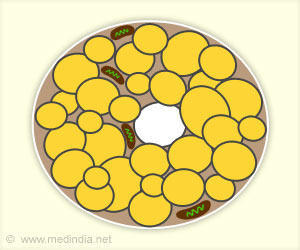Researchers in San Diego have designed mice containing fully functional human nerve cells as a novel way to study and potentially treat neurodegenerative diseases such as Parkinson's and Alzheimer's.
Researchers in San Diego have designed mice containing fully functional human nerve cells as a novel way to study and potentially treat neurodegenerative diseases such as Parkinson's and Alzheimer's.
In the Salk Institute for Biological Sciences in La Jolla, the neurons were formed in the brains of mice that had been injected with human embryonic stem cells as 2-week-old embryos.Studies showed that the human stem cells migrated throughout the mouse brain and took on the traits of their mouse-cell neighbors. The results present direct evidence that primitive human stem cells can be cultured in the lab, be injected into an animal, and then develop into the type of cell desired.
The report appears in this week's Proceedings of the National Academy of Sciences.
Scientists say this is the first time cultured human embryonic stem cells have been shown to develop into a particular type of cell in the body of another living species.
Days are still far off when this "mouse-human chimeric nervous system" can spawn a mouse with a human-like cerebral cortex. In fact, all the brain structures of the four mice used in the experiments had been formed before the human cells were injected. What is more, less than 0.1 percent of the mice brain cells were found to be of human origin.
Yet the new experiments approach an ethical divide that could make unsettle observers.
Advertisement
Still, some critics of human embryonic stem cell research argue that more attention should be paid to the ethics and potential dangers of cutting-edge biomedical research.
Advertisement
Researchers now hope to discover how brain disorders develop out of the mysterious interaction of neurons and their surroundings.
The question is whether a diseased environment influences nondiseased cells, or diseased cells hurt a healthy, intact environment.
In this context, two types of experiments are envisioned: Healthy human cells might be injected into animal brains carrying human-like genetic disorders; and cells carrying disease traits, perhaps derived through cloning techniques from cells of living patients, might be injected into normal animal brains.
Similarly, if a drug candidate is found, it might first be given to chimeric mice to study the drug's effect on human cells in a living system before proceeding to human trials.
The researchers said care was taken to ensure that the human-mouse brain experiments were done ethically and noted that the experimental design was approved in advance by an independent ethics review board sponsored by the Salk Institute.
Mice are routinely bred with human immune systems, but the nervous system is another matter. In this set of experiments, the important question is not whether the mice had human cells, but whether any human-like structures were beginning to grow in the mouse brain.









